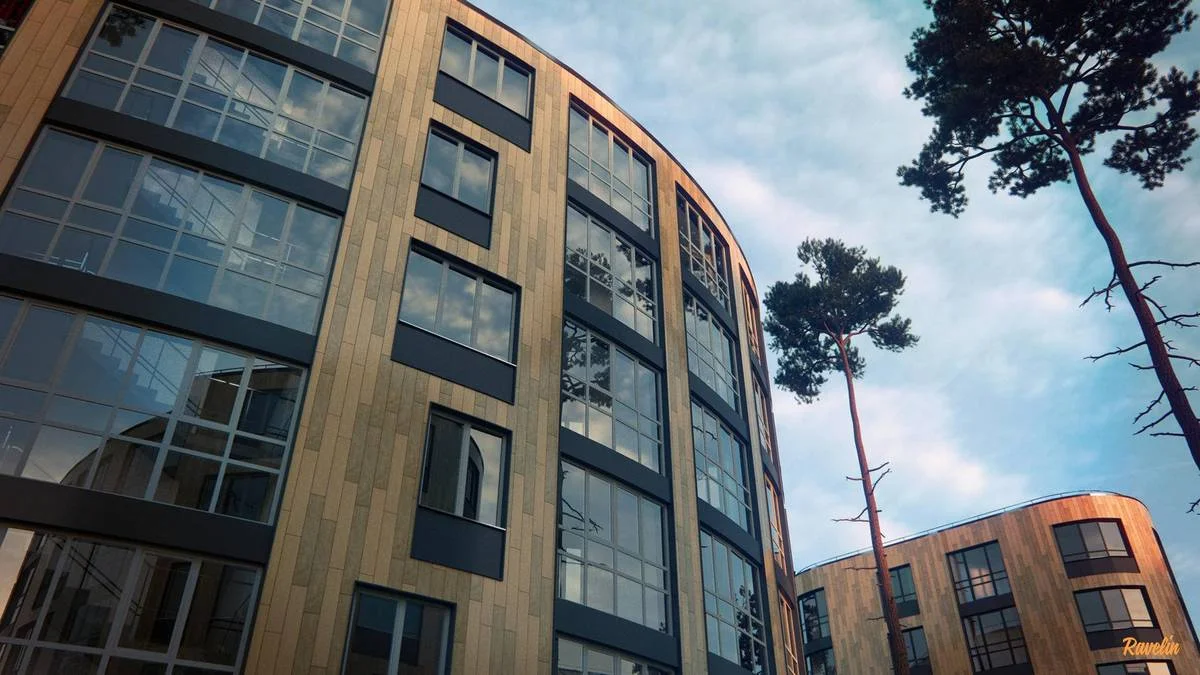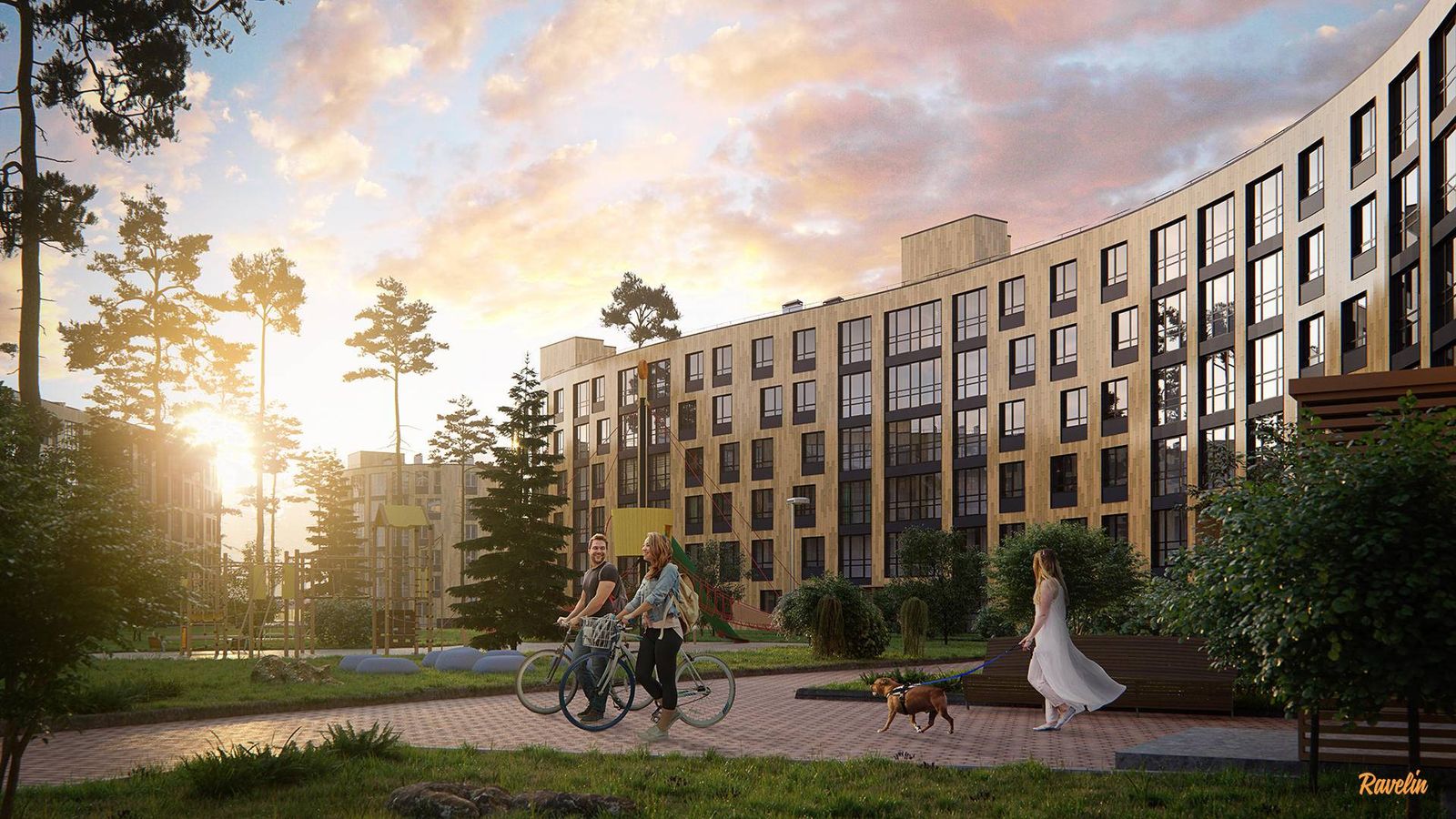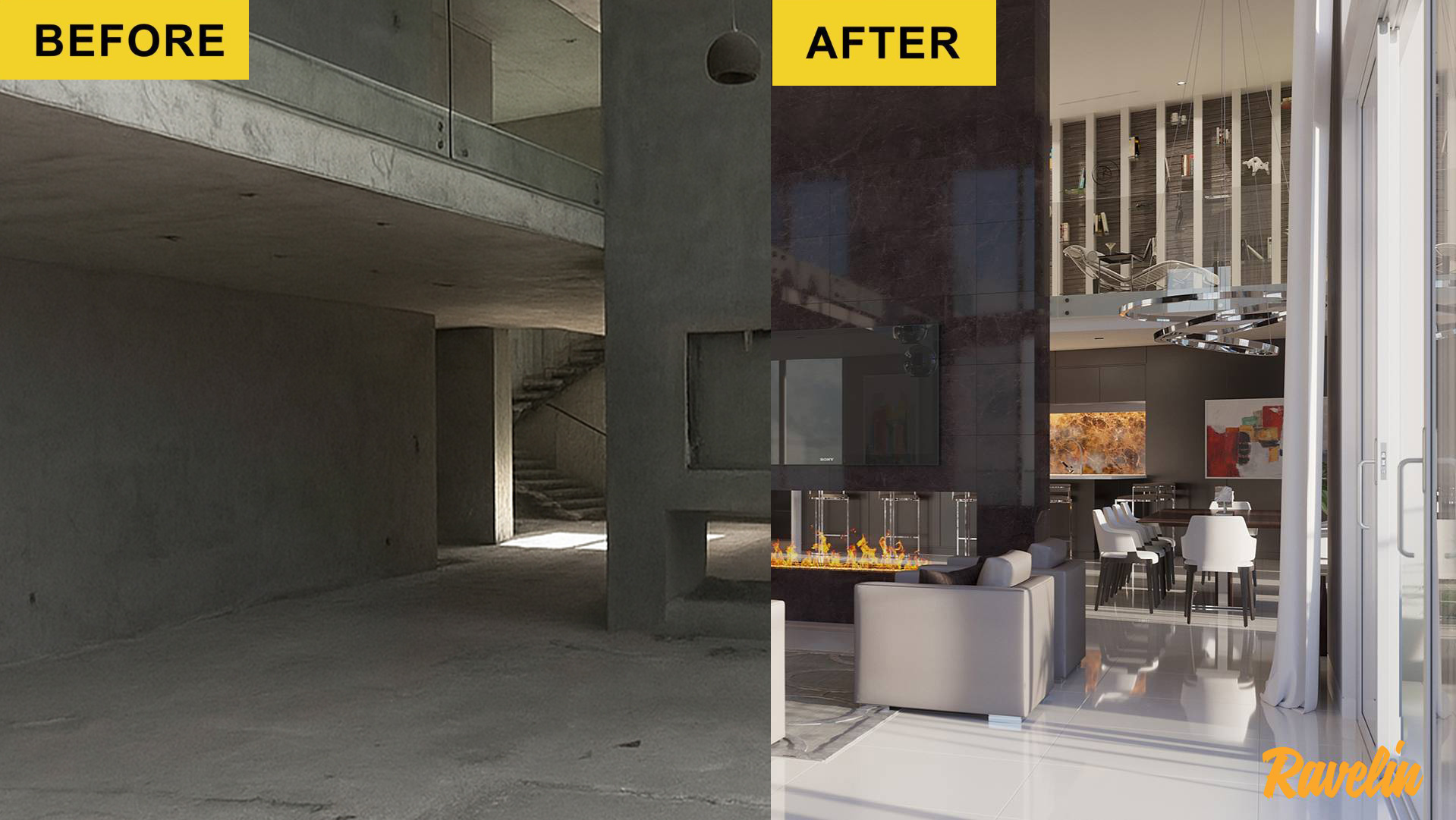Photorealistic 3D Rendering Options for Architectural Projects
Imagine trying to sell a dream home without the dream. You’ve got plans, elevations, and maybe a shaky sketch or two — but let’s be honest, most clients can’t picture a future masterpiece from technical drawings alone. In today’s visual-first world, photorealistic 3D renderings are your architectural pitch deck, your silent salesman, your emotional hook. These images don't just show — they sell.
Whether you're an architect trying to win over a skeptical planning committee or a developer looking to make a buyer fall in love with a future skyline view, photorealistic visuals can mean the difference between "let's talk" and "no thanks."
Ready to dive in? Let’s explore why photorealistic renderings have become an essential asset for modern architecture and real estate.
What Is Photorealistic 3D Rendering?
Imagine pressing pause on a movie scene where everything — from the lighting on the sofa to the reflections in the window — looks real. That’s what a photorealistic rendering aims to do: freeze a moment that doesn’t yet exist, but feels like it already does.
At its core, photorealistic 3D rendering is the digital craft of turning architectural plans into hyper-detailed, lifelike images. It’s where pixels meet poetry — transforming CAD lines and material boards into immersive visuals that whisper, “This could be your space.”
Unlike traditional sketches or generic 3D models, these renderings tap into human emotion. Warm lighting in a cozy kitchen. Sunset shadows stretching across a glass façade. Rain-speckled pavement on a modern city block. When done right, these visuals go beyond realism — they tell stories.

Why Do Architecture Firms Need Photorealistic Visualization?
Let’s face it — most people aren’t great at reading blueprints. Hand someone a floor plan and they might squint, nod politely, and hope you explain the rest. But show them a photorealistic rendering? You’ll see their eyes widen. Their imagination kicks in. They’re in the space before it’s even built. So why is this kind of visualization not just nice to have, but essential? Let’s break it down.
Selling Projects Before Construction Begins
Before the first shovel hits the ground, you need buy-in. Investors want assurance. Clients want excitement. Buyers want a reason to commit.
Photorealistic renderings act as a time machine — they let people step into the finished project months (or years) before it exists. Imagine a developer pitching a luxury condo — instead of describing rooftop views and marble kitchens, they show them. The result? Faster sales, earlier funding, and fewer delays waiting for approvals.
Presenting Ideas to Investors and Clients
In high-stakes architecture, confidence is currency. A stunning render doesn’t just say, “We have a vision.” It says, “We’ve already built it in our minds — now let’s make it real.”
Whether you’re wooing investors, meeting with city officials, or walking clients through design options, photorealistic images help align expectations. They build trust. They reduce misunderstandings. And they spark better conversations — because everyone is seeing the same thing.
Speeding Up Approval Processes
Ever had a brilliant design held up because someone “just couldn’t picture it”? Yeah — us too.
Municipal boards, homeowner associations, even picky neighbors — all of them become easier to work with when your visuals do the talking. A well-rendered image answers questions before they’re asked. It shows how the building fits into the landscape, how the shadows fall, how the materials reflect the sun.
In short: it removes doubt — and doubt is the number-one enemy of progress.

Main Types of Photorealistic Architectural Renderings
Think of architectural renderings like a good playlist — you need different tracks for different moods. The same goes for visualizations. Each type tells a different part of the story, and choosing the right one can shape how your project is perceived, sold, and remembered. Let’s explore the core categories that bring designs to life.
Exterior Rendering
The curb appeal starts here — even if the curb hasn’t been poured yet. Exterior renderings showcase how your building will live in its environment, from bold high-rises to serene lakefront homes.
Daytime View
Crisp shadows. Clear skies. The kind of light that flatters glass, stone, and structure. A daytime view is clean, confident, and professional — the LinkedIn headshot of architectural imagery. It’s perfect for giving clients a clear, honest look at the form and materials in natural conditions.

Nighttime View
Here’s where things get dramatic. Nighttime renderings are all about mood — glowing windows, soft landscape lights, reflections in wet pavement. It’s less about structure and more about atmosphere. If you’re trying to sell luxury or emotion, this is your go-to.

Golden Hour Rendering
The favorite child of real estate marketing — and for good reason. Golden hour brings warmth, richness, and cinematic romance to any building. With long shadows and amber light, even concrete feels poetic.

Interior Rendering
Interiors are where buyers imagine life unfolding — coffee brewing, kids playing, deals closing. A great interior render turns four walls into a scene.
Residential Interiors
From cozy bedrooms to sleek kitchens, residential interior renders help future homeowners visualize their lifestyle. Think of them as emotional blueprints: a dining table glowing under pendant lights, soft rugs over warm wood floors, morning light pouring through sheer curtains.

Commercial Interiors
Here we swap comfort for confidence. Office spaces, lobbies, restaurants — every detail matters. These renders don’t just show furniture placement, they convey branding, flow, and usability. For developers and B2B clients, it’s proof of function wrapped in aesthetics.

Contextual and Environmental Visualization
Buildings don’t float in space — they belong to neighborhoods, landscapes, skylines. Contextual renderings anchor your project in the real world.
Realistic Landscaping and Greenery
Adding trees, grass, and plant life is more than decoration — it gives a sense of time and care. Will this home be shaded by a maple tree in ten years? Will the entrance be framed by lavender and stone? These details invite the viewer to project forward.

Urban Surroundings and Infrastructure
Context sells credibility. A smart rendering includes adjacent buildings, roads, and even pedestrian activity. It helps stakeholders assess integration and impact — especially in urban planning or city approval cases.
Renderings with People and Vehicles
This is where renderings go from still life to real life. Adding motion — a parked car, someone holding coffee, kids on bikes — activates the scene. It makes your architecture feel lived in, not just imagined.

Adding Life and Motion to the Scene
Even a few subtle figures can transform a static image into a story. A man looking out a balcony. A dog walking down a path. These are tiny cues that say, “This place has rhythm. This place breathes.”
Providing a Sense of Scale
Humans are natural yardsticks. Add a person, and suddenly a ten-meter-high entrance makes sense. Vehicles help too — especially in urban scenes or parking-integrated designs. Without them, a structure can feel floaty or ambiguous.

Key Elements That Make a 3D Rendering Photorealistic
Not all 3D renderings are created equal. Some look like stiff video game cutscenes — others make you want to reach through the screen and touch the fabric on the couch. What’s the difference? It’s all in the details. The magic of photorealism is the sum of many invisible choices — choices that take your viewer from “nice design” to “wait… is this real?” Let’s unpack the elements that separate the jaw-dropping from the just-okay.
Accurate Lighting and Shadows
Lighting is the heartbeat of realism. Harsh noon light, soft morning glow, interior LEDs — each one tells a different story. But it's not just about brightness. It's about behavior. Does the light bounce off surfaces naturally? Do shadows stretch and fade with believable softness? A great render simulates how light interacts with every surface — from polished marble to matte drywall. This is what gives depth, mood, and that elusive realness.
Detailed Textures and Materials
Here’s a quick test: zoom in on a wall in a rendering. Can you almost feel the texture?
Photorealism lives in the imperfections — the subtle grain in wood, the cold sheen of brushed steel, the way carpet gently catches the light. High-quality materials and realistic mapping give your rendering tactile credibility. They make the difference between a “digital model” and a space that breathes.
Camera Angle and Composition
You don’t need a good building — you need a good shot of a good building. The best visualizations use the language of photography: depth of field, rule of thirds, foreground elements. A slightly lower camera angle can make a house feel monumental. A lens that mimics a real-world focal length creates authenticity. Composition isn’t decoration — it’s direction.
Post-Production and Color Correction
Post-processing is the polish on the sculpture. Adjusting contrast, correcting color casts, enhancing shadows — all these small tweaks elevate the raw render into something cinematic.
Done poorly, post-production makes things look artificial or overcooked. Done right, it enhances the realism without drawing attention to itself — like a great soundtrack in a film.

How to Choose the Right Rendering Style for Your Project
Choosing a rendering style isn’t just an artistic decision — it’s a strategic one. You’re not just showing a building; you’re telling a story, pitching a concept, solving a problem. The right style connects your vision to the viewer’s emotions and expectations.
So how do you make the right call? Let’s break it down.
Understanding the Target Audience
Who are you trying to impress?
If you’re presenting to city officials, they’ll want realism and clarity. Investors? They need scale, ROI appeal, and fast impact. Homebuyers? They want emotion, warmth, and a reason to imagine themselves there.
Tailoring the rendering to the audience isn’t optional — it’s the difference between being ignored and getting a “Let’s talk.”
Defining the Purpose of the Visualization
Not every image needs to sell a lifestyle. Sometimes, you just need to show material choices or a technical layout. Other times, you need to inspire, persuade, or even provoke.
Ask yourself:
- Is this render meant to sell?
- To explain?
- To gain approval?
- To spark imagination?
Once you define the purpose, the right style almost chooses itself.
Matching the Format and Marketing Channel
A billboard needs drama. A brochure needs elegance. A pitch deck needs clarity. And an Instagram ad? It needs to stop a scroll.
Think about where the image will live. Will it be printed? Embedded in a website? Animated in a video? Different mediums call for different visual strategies — in resolution, aspect ratio, mood, and even detail level.
In short: don’t just create a beautiful image — create a useful one.

Tips for Creating High-Quality Photorealistic Renderings
Even the best concept can fall flat if the execution is off. Think of rendering like cooking — your ingredients (plans, textures, lighting) matter, but so does how you put them together.
Here are some field-tested tips to help you go from “meh” to “magnificent.”
Prepare Clear References and Briefs
A great rendering starts before a single pixel is drawn. Clear input = clean output.
Provide your rendering team with detailed architectural drawings, mood boards, material samples, and even photography references. Got a Pinterest folder full of dream kitchens? Share it. A blurry iPhone photo of the vibe you want? That works too.
The more you communicate your intent, the fewer revisions you’ll need — and the closer the result will hit home.
Select the Right Atmosphere and Time of Day
Light isn’t just technical — it’s emotional. A morning-lit patio says “fresh start.” A dusk-lit skyscraper says “power and presence.” A foggy forest house whispers “mystery and escape.”
Choose an atmosphere that aligns with your project’s personality and purpose. Want warmth and comfort? Go golden hour. Want sleek and modern? Try a clean, bright midday look. Want drama? Nighttime with internal lighting can work wonders.
Align Visual Focus with Project Goals
Every render needs a hero. Maybe it’s the open-plan kitchen. Maybe it’s the entry façade. Maybe it’s the rooftop terrace with the killer view.
Guide the viewer’s eye. Use depth, framing, lighting, and even selective blur to point attention where it matters most. Don’t overcrowd the scene — let your hero feature shine. Remember: in visual storytelling, what you don’t show is just as important as what you do.

Frequently Asked Questions
Photorealistic renderings often leave clients with one part awe… and one part curiosity. “This looks amazing — but how does it actually work?”
Let’s tackle the most common questions we hear from architects, developers, and real estate pros.
How Long Does It Take to Create a Photorealistic Rendering?
The honest answer? It depends.
A simple interior render with a clear brief might take 2–4 days. A large-scale exterior with landscaping, context buildings, lighting variations, and multiple revision rounds? That could be a week or more. The timeline is shaped by:
- The complexity of the design
- The quality of the input materials
- The number of views requested
- The speed of communication and feedback
Pro tip: start early. Rendering is part art, part architecture — and rushing either rarely ends well.
Can Revisions Be Made After the Rendering Is Complete?
Absolutely — but with limits. Small tweaks like lighting, colors, or furniture placement? Totally doable. Major changes like new layouts, structural edits, or re-modeling the geometry? That’s more like starting over.
That’s why clear communication before rendering starts is crucial. Treat your first render like a prototype — and your final like a polished film shot.
How Do Renderings Support Real Estate Marketing?
In a word? Everywhere. High-quality renderings power listings, social media ads, email campaigns, brochures, investor decks, and even construction signage. They give your marketing team a powerful visual asset that speaks across languages, platforms, and time zones.
It’s one thing to tell someone how amazing your building will be. It’s another thing to show them, instantly, on their phone, in high resolution, in perfect lighting.

Conclusion
Why Photorealistic Rendering Is an Investment in Project Success
Photorealistic 3D rendering isn’t just a pretty picture — it’s a strategic tool, a deal-closer, a silent partner in your sales pitch. It turns abstract designs into visceral experiences. It shortens conversations, accelerates approvals, and captures attention in a world flooded with noise.
In the architecture and real estate space, where competition is fierce and decisions are high-stakes, clarity is power. And nothing brings clarity like seeing your unbuilt vision come alive in lifelike detail.
Whether you're designing a skyline-changer or a cozy lakeside retreat, a powerful rendering can be the spark that moves your project from paper to reality — and from idea to income.
So don’t just imagine your next big project. Show it. And let your visuals do the winning for you.




